Rodin: The Burghers of Calais
|
Burghers of Calais, Auguste Rodin Bronze, cast 1943 and installed in 1966 Nov 2016, Photo 367 |
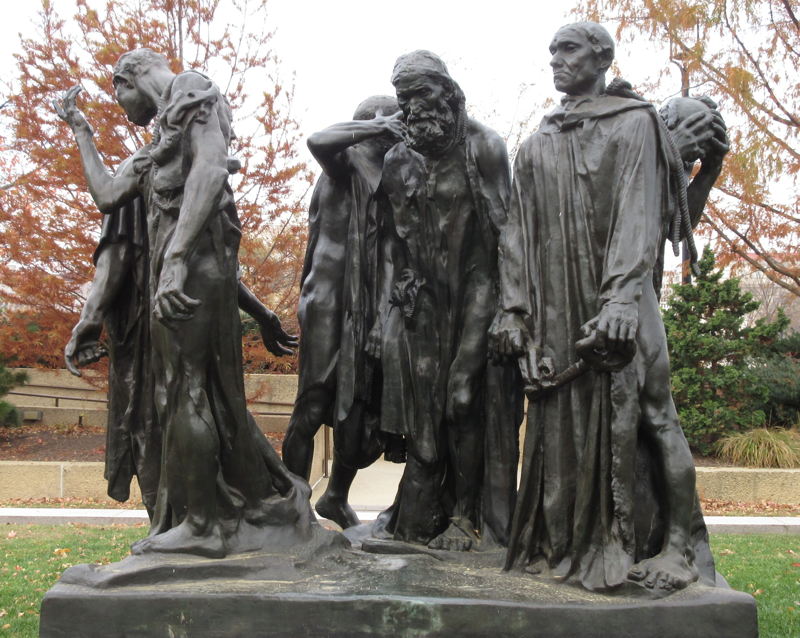
|
|
Burghers of Calais, Auguste Rodin Bronze, cast 1943 and installed in 1966 Nov 2016, Photo 368 |
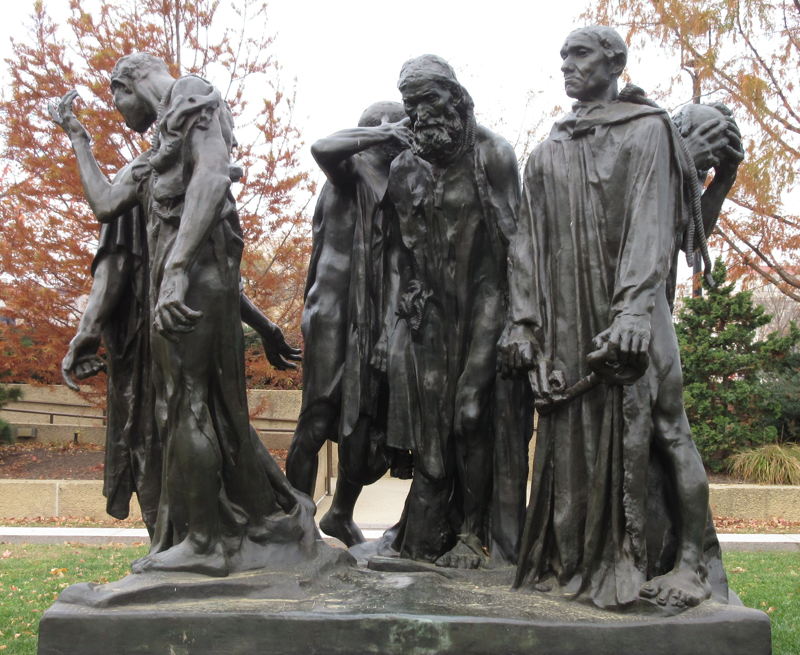
|
|
Burghers of Calais, Auguste Rodin Bronze, cast 1943 and installed in 1966 Nov 2016, Photo 369 |
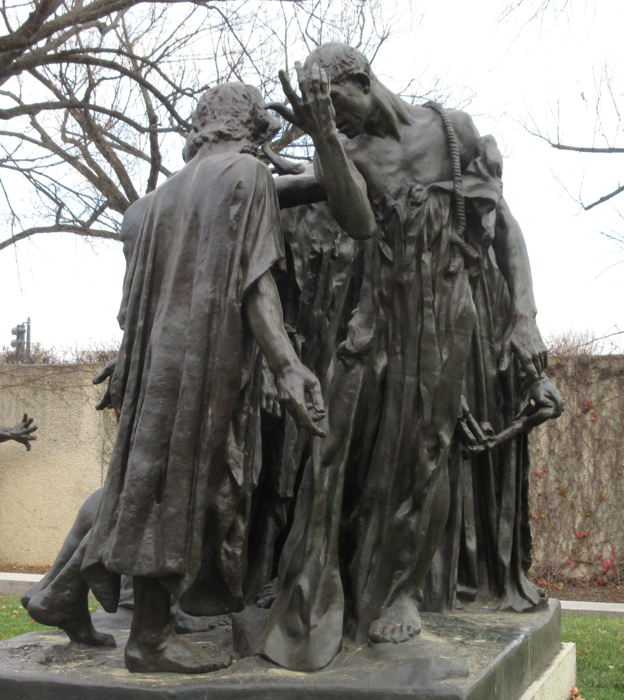
|
|
Burghers of Calais, Auguste Rodin Bronze, cast 1943 and installed in 1966 Nov 2016, Photo 370 |
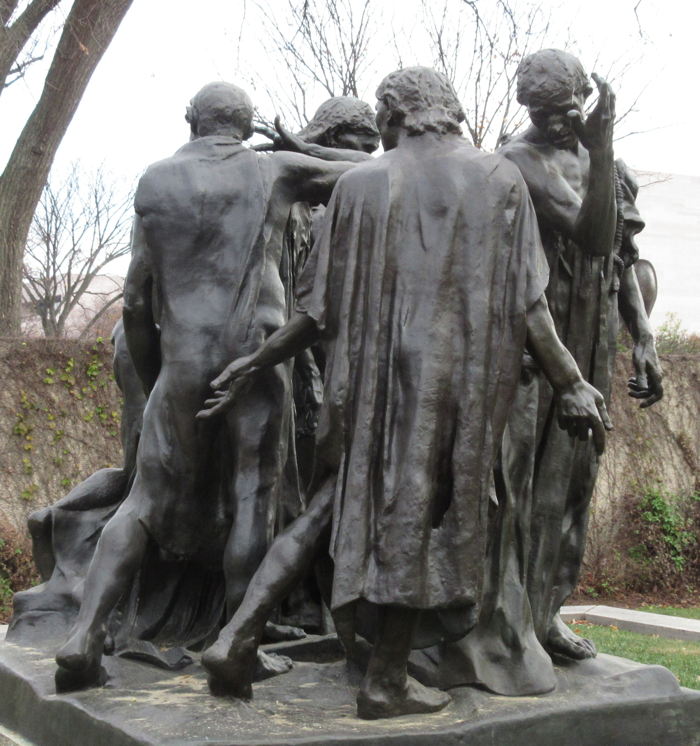
|
|
Burghers of Calais, Auguste Rodin Bronze, cast 1943 and installed in 1966 Nov 2016, Photo 371 |
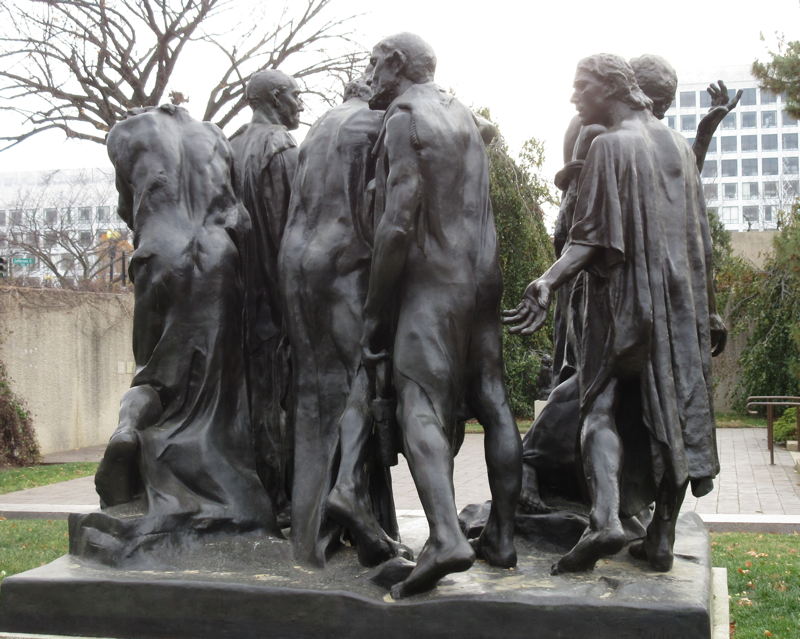
|
|
Burghers of Calais, Auguste Rodin Bronze, cast 1943 and installed in 1966 Nov 2016, Photo 424 |
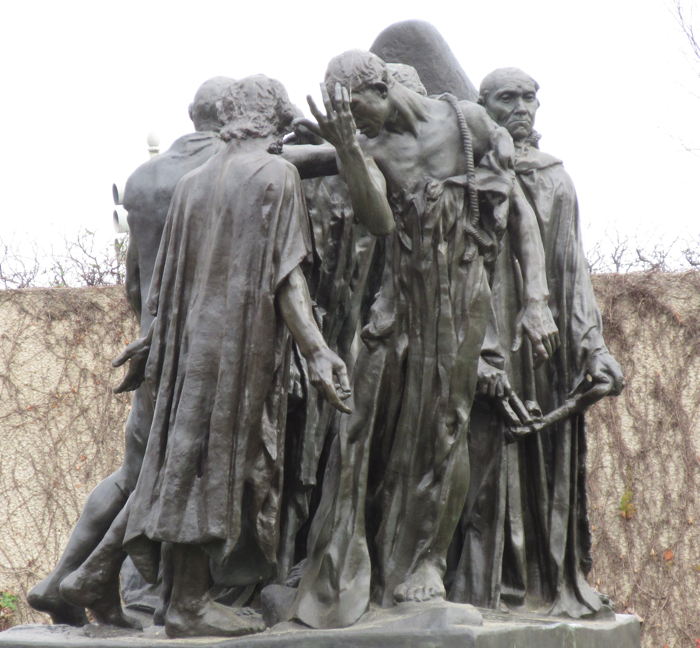
|
|
Hirshorn Gallery Sculpture Gallery Rodin, The Burghers of Calais Les Bourgeois de Calais is one of the most famous sculptures by Auguste Rodin, completed in 1889. It serves as a monument to an occurrence in 1347 during the Hundred Years' War, when Calais, an important French port on the English Channel, was under siege by the English for over a year. The story goes that England's Edward III, after a victory in the Battle of Crécy, laid siege to Calais, while Philip VI of France ordered the city to hold out at all costs. Philip failed to lift the siege, and starvation eventually forced the city to parley for surrender. Edward offered to spare the people of the city if any six of
its top leaders would surrender themselves to him, presumably to
be executed. Edward demanded that they walk out almost naked,
wearing nooses around their necks, and carrying the keys to the
city and castle. One of the wealthiest of the town leaders,
Eustache de Saint Pierre, volunteered first, and five other
burghers soon followed suit, stripping down to their breeches.
Photo 124, Nov 2011 |

|
|
Hirshorn Gallery Sculpture Gallery Rodin, The Burghers of Calais
Saint Pierre led this envoy of emaciated volunteers to the city gates. It was this moment, and this poignant mix of defeat, heroic self-sacrifice, and willingness to face imminent death that Rodin captured in his sculpture, scaled somewhat larger than life. In history, though the burghers expected to be executed, their lives were spared by the intervention of England's Queen, Philippa of Hainault, who persuaded her husband to exercise mercy by claiming that their deaths would be a bad omen for her unborn child. Photo 125, Nov 2011 |

|
|
Hirshorn Gallery Sculpture Gallery Rodin, The Burghers of Calais, detail Photo 126, Nov 2011 |

|
|
Hirshorn Gallery Sculpture Gallery Rodin, The Burghers of Calais Photo 87, Nov 2008 |

|
|
Hirshorn Gallery Sculpture Gallery Rodin, The Burghers of Calais Photo 89, Nov 2008 |

|
|
Hirshorn Gallery Sculpture Gallery Rodin, The Burghers of Calais Photo 90, Nov 2008 |

|
|
Hirshorn Gallery Sculpture Gallery Rodin, The Burghers of Calais Photo 91, Nov 2008 |

|
|
Hirshorn Gallery Sculpture Gallery Rodin, The Burghers of Calais Photo 92, Nov 2008 |

|
|
Hirshorn Gallery Sculpture Gallery Rodin, The Burghers of Calais Photo 93, Nov 2008 |

|
|
The Burghers of Calais
Les Bourgeois de Calais is one of the most famous sculptures by Auguste Rodin, completed in 1889. It serves as a monument to an occurrence in 1347 during the Hundred Years' War, when Calais, an important French port on the English Channel, was under siege by the English for over a year. Calais commissioned Rodin to create the sculpture in 1884. The City of Calais had attempted to erect a statue of Eustache de Saint Pierre, eldest of the burghers, since 1845. In 1884 the city invited several artists, Rodin amongst them, to submit proposals for the project. (Continued below) Photo 27, Nov 2014 |
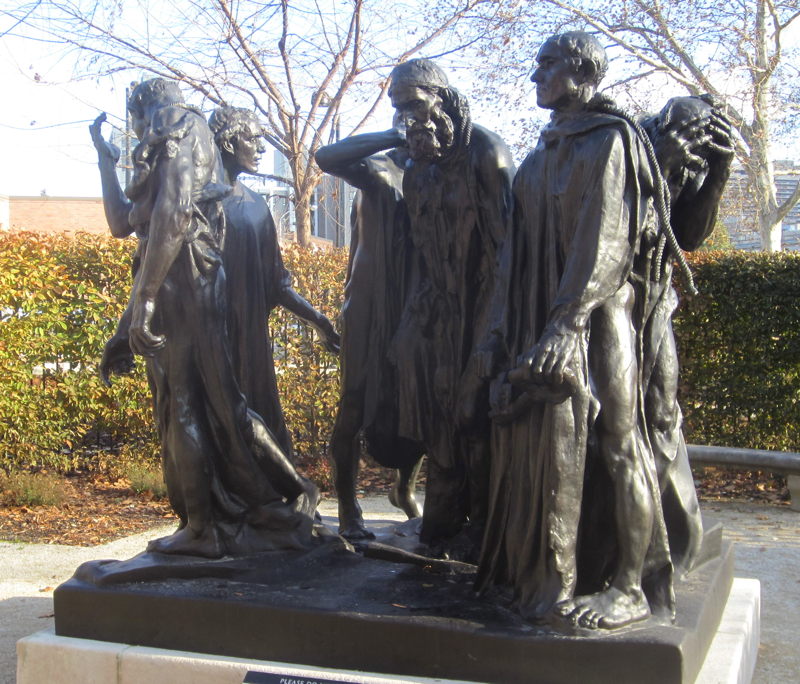
|
|
The Burghers of Calais
Rodin's design was controversial. The public had a lack of appreciation for it because it didn't have "overtly heroic antique references" which were considered integral to public sculpture. It was not a pyramidal arrangement and contained no allegorical figures. It was intended to be placed at ground level, rather than on a pedestal. The burghers were not presented in a positive image of glory; instead, they display "pain, anguish and fatalism". To Rodin, this was nevertheless heroic, the heroism of self-sacrifice. In 1895 the monument was installed in Calais on a large pedestal in front of a Parc Richelieu, a public park, contrary to the sculptor's wishes, who wanted contemporary townsfolk to "almost bump into" the figures and feel solidarity with them. Only later was his vision realised, as in 1926 the sculpture was moved in front of the newly completed town hall of Calais, where it rests on a much lower base. Photo 30, Nov 2014 |
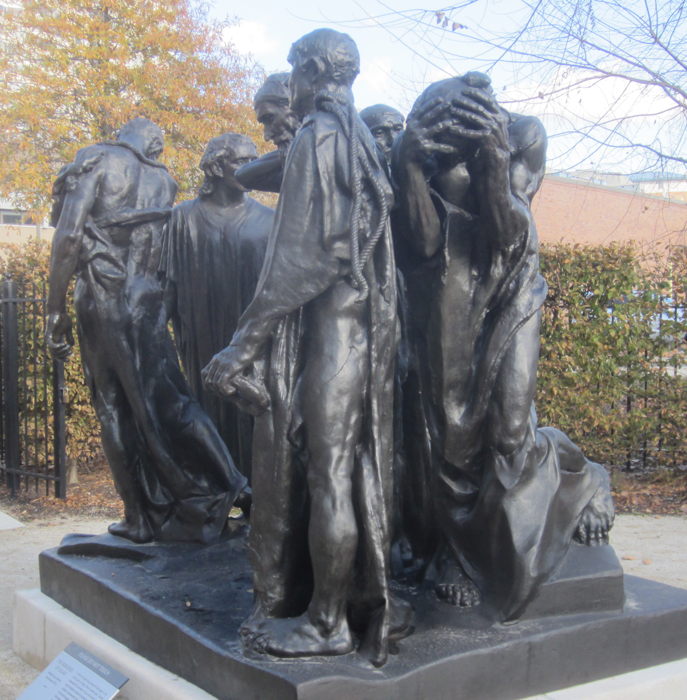
|
|
The Burghers of Calais
Photo 31, Nov 2014 |

|
|
The Burghers of Calais
Photo 32, Nov 2014 |
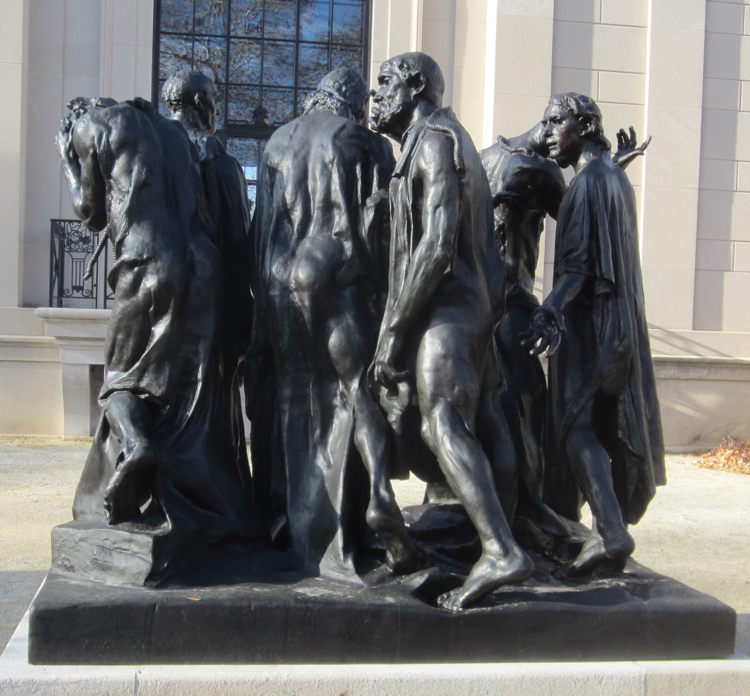
|
|
One of the The Burghers of Calais 1887, cast 1966
Photo 270, Aug 2005 |

|
|
One of the The Burghers of Calais 1887, cast 1966
Photo 272, Aug 2005 |

|